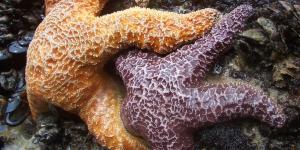How Do Fish Reproduce?


Fish experience reproduction in one of two ways. These processes include fertilization inside or outside the body. Fish are either ovoviviparous, viviparous or oviparous. Additionally, it is important to note that reproduction can also change according to the fish’s environment, specifically if it lives in an aquarium.
If you want to know more about how different fish species reproduce, keep reading this AnimalWised article for more.
What are oviparous fish?
Oviparous fish species experience external fecundation. This means that the female fish expels her eggs outside of her body, whereby the male will fertilize them. These eggs can be deposited at the bottom of the ocean, on rocks or algae or can be kept in the mouth or gill chambers of the fish.
Fish species that instinctively defend their eggs are incredibly territorial and protective. This is due to the fact that predators often target the eggs which are not protected: like in viviparous species. Breams, trout, tuna, puffer fish, carps or sea bass all belong to this oviparous fish group.

What are viviparous fish?
Viviparous fish produce fish internally. Males fertilize the eggs that are carried inside of the female. In the case of viviparous species the young, otherwise known as fry, are born completely formed. This type of production results in an increase of offspring survival. Most sharks belong to this group of viviparous fish.
What are ovoviviparous fish?
Reproduction of ovoviviparous fish involves internal fertilization. The females store the needed sperm for their eggs, without the requirement of male presence. First, a male fish executes rituals to attract the female fish. After intercourse, the female carries the fertilized eggs inside of her body. The young then mature within the mother’s body and the eggs are then expelled. Examples of ovoviviparous fish include: tiger sharks, stingrays and giant rays.
In terms of general fish reproduction, it is important to know that some fish migrate to reproduce. For example, salmon live in the sea, but they traverse to rivers to spawn, making them anadromous. Eels, on the other hand, inhabit rivers. Once eels are ready to reproduce, they descend to seas where they spawn. These eels belong to the catadromous fish group[1].

Aquarium fish reproduction
Do you wish to increase your fish family in your aquarium? If so, take into account these following tips on fish reproduction in an aquarium:
- It is important to know that some fish will present sexual dimorphism, this means that males and females will present themselves in different colors or sizes. These differences help to differentiate them.
- Some fish are hermaphrodites, which means that they can behave indistinctly like males or females. They can reach sexual maturity as either females or males and vice versa.
- You must arrange your aquarium space according to the reproductive characteristics of your specific fish. For example, if they are fish that spawn on rocks, these rocks should be at their disposal.
- In some cases, newborn fry will have to be separated from their parents or other fish, in order not to be eaten.
- It is also important that you reproduce the ideal conditions of their natural habitat. This means taking into consideration the temperature, pH, cleaning and oxygenation of the water and tank.
- Having a group of fish rather than a couple, favors the success of reproduction.
- Diet is very important when it comes to fish care. Beware of overfeeding. In addition, one must take care of fry feeding, as it will differ from the diet of a mature fish.
Popular fish for children
Here, we will be discussing how the most popular fish among children are reproduced. We will be focusing on, for example, the clown fish from the movie Finding Nemo.
As we have already mentioned, it is essential that your aquarium is an ideal space for your specific species. Clown fish are both oviparous and hermaphroditic. These fish most commonly lay their eggs in the spring.
When breeding, the most dominant fish (usually the largest) will take on the role as female. They will glue their orange and capsule-shaped eggs to plants, rocks or a simple pot. Shortly before this action takes places, you will notice that the female will clear the space of the chosen area. The males are in charge of the egg care, and you will most likely notice them swimming and monitoring the area, moving their fins to oxygenate the water. The egg color will change and the normally hatch within 7-10 days, at dusk[2].
Once hatched, we recommend moving the fry to another aquarium to avoid them being eaten. The eggs can also be moved. This new aquarium should give off low light and the fry should be offered food such as green water or brine shrimp.
If you want to raise these fish at home, we recommend making sure that the specimens have not been caught in the ocean in order to preserve their environment. In addition, if you have any doubts about the well-being of your fish and their reproduction, we recommend consulting a veterinarian.

If you want to read similar articles to How Do Fish Reproduce?, we recommend you visit our Facts about the animal kingdom category.








